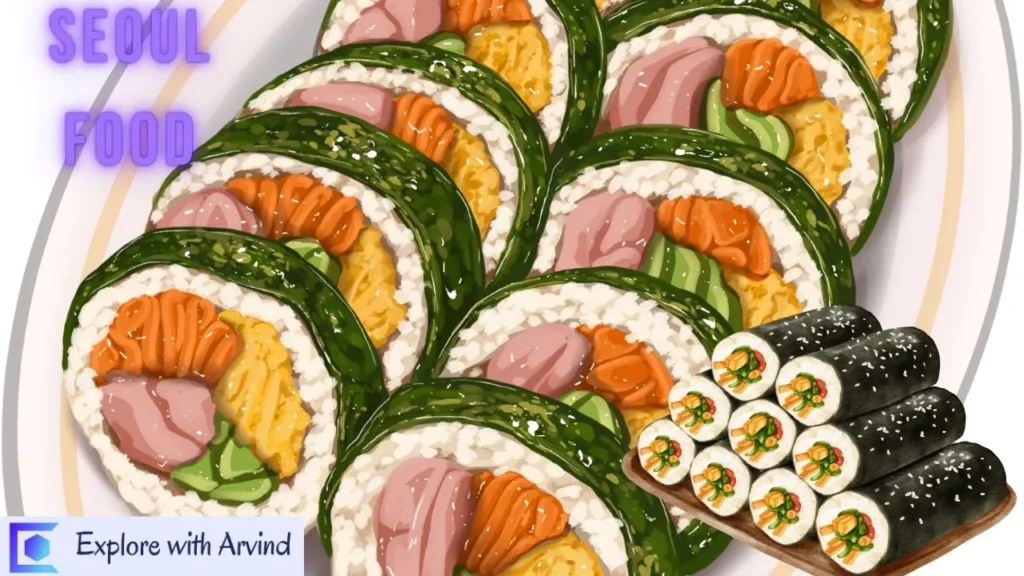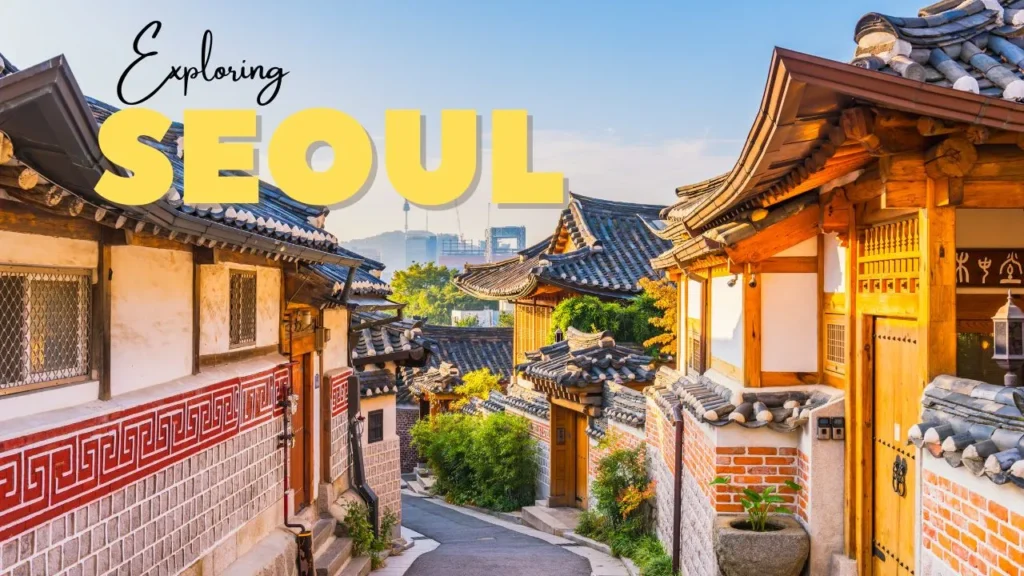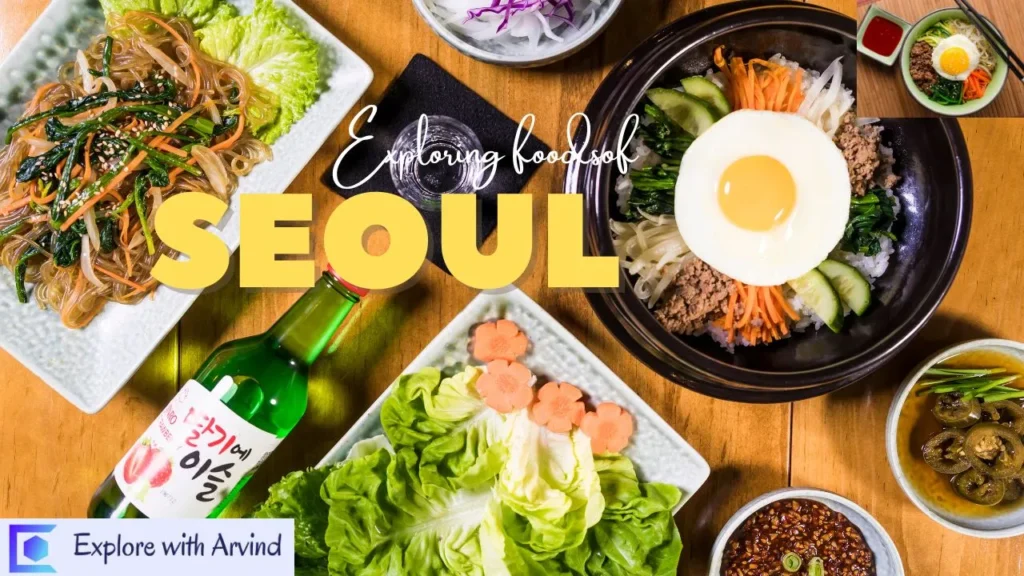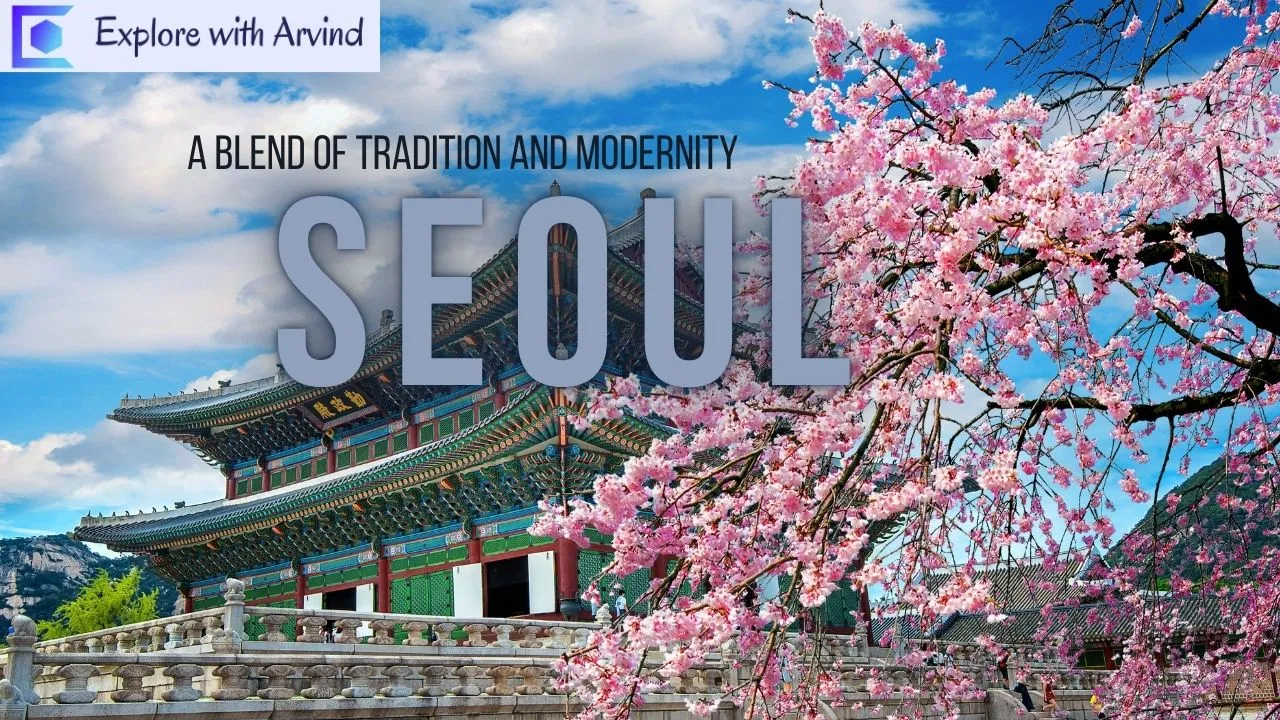Table of Contents
ToggleSeoul: A Modern Metropolis with Rich Heritage

Introduction
Seoul, the capital of South Korea, is a dynamic metropolis where traditional heritage meets modern innovation. Known for its bustling streets, cutting-edge technology, and rich cultural history, Seoul offers a unique blend of the old and new.
Explore the vibrant city of Seoul, South Korea, with insights on connectivity from India and the USA, its rich cultural heritage, diverse food habits, and its significance as a global technological hub. Discover the unique blend of tradition and modernity in this bustling metropolis.
Connectivity to Seoul
From India
Traveling to Seoul from India is convenient with direct flights available from major cities like New Delhi, Mumbai, and Bengaluru. Airlines such as Korean Air, Asiana Airlines, and Air India operate frequent flights to Incheon International Airport, which is located about an hour from the city center. The journey typically takes around 6-7 hours.
From the USA
Seoul is well-connected to various cities in the USA, including Los Angeles, New York, San Francisco, and Seattle. Direct flights operated by Korean Air, Asiana Airlines, and major American airlines like Delta and United Airlines usually take around 13-15 hours. Incheon International Airport serves as the primary gateway, offering efficient and rapid access to the heart of Seoul.

In-Depth Look at Seoul
Population and Demographics
Seoul is home to approximately 9.7 million people, making it one of the most densely populated cities in the world. The city’s population is diverse, with a mix of Koreans and expatriates contributing to its multicultural environment. The greater metropolitan area, known as the Seoul Capital Area, has a population of over 25 million people, encompassing nearby cities like Incheon and Suwon.
Culture and Traditions
Seoul is a city steeped in tradition, with numerous palaces, temples, and historical sites reflecting its rich past. Landmarks such as Gyeongbokgung Palace and Changdeokgung Palace offer a glimpse into Korea’s royal heritage. The city also embraces modernity, hosting a vibrant arts scene, with museums, galleries, and theaters showcasing contemporary Korean culture.
Korean festivals like Chuseok (harvest festival) and Seollal (Lunar New Year) are celebrated with much fervor, offering visitors a chance to experience traditional customs and culinary delights.
Food Habits
Seoul’s culinary scene is renowned for its diversity and richness. Traditional Korean dishes such as kimchi, bulgogi (marinated beef), bibimbap (mixed rice), and tteokbokki (spicy rice cakes) are must-tries. Street food is an integral part of the city’s food culture, with markets like Gwangjang and Namdaemun offering a plethora of options ranging from hotteok (sweet pancakes) to mandu (dumplings).
The city is also known for its trendy cafes and international cuisine, catering to a wide range of tastes and preferences.
Economic and Technological Importance
Seoul is a global financial hub and a leading city in technology and innovation. It is home to major conglomerates like Samsung, LG, and Hyundai, driving South Korea’s economy. The city boasts one of the fastest internet speeds in the world and is a pioneer in smart city initiatives, integrating advanced technology into urban management.
Tourism and Lifestyle
While Seoul is famous for its vibrant nightlife, shopping districts, and K-pop culture, it also offers tranquil experiences like walks along the Han River and hikes in Bukhansan National Park. The city’s efficient public transportation system, including the extensive subway network, makes it easy to explore various neighborhoods, each with its unique charm.

If you are interested in visiting Seoul, here is a 4 day itinerary. You can follow this to explore the culture and foods of Seoul. You may change it as per your preference. This is just an indicative itinerary.
Here’s a 4-day itinerary for Seoul that focuses on lesser-known spots and local experiences:
Day 1: Discovering Hidden Gems
Morning:
Ihwa Mural Village: Start your day exploring this charming neighborhood filled with colorful murals and art installations. It’s a great place for a leisurely stroll and some unique photo opportunities.
Lunch:
Jongno 3-ga Food Alley: Head to this local food alley for some authentic Korean street food. Try dishes like tteokbokki (spicy rice cakes), odeng (fish cake), and mandu (dumplings).
Afternoon:
Seochon Village: Wander through this historic neighborhood near Gyeongbokgung Palace. It’s known for its traditional Korean houses (hanok), indie cafes, and boutique shops. Visit Tongin Market and try the “Dosirak Café,” where you can create your own lunchbox with various Korean dishes.
Dinner:
Jangsu Samgyeopsal: Enjoy a Korean BBQ dinner at this local favorite spot, famous for its samgyeopsal (grilled pork belly).
Day 2: Art and Culture
Morning:
Seoul Art Space Mullae: Visit this industrial area turned artist village, filled with galleries, studios, and unique street art. It offers a glimpse into Seoul’s burgeoning contemporary art scene.
Lunch:
Yeonnam-dong: Head to this trendy neighborhood near Hongdae for lunch. Check out one of the many cozy cafes or fusion restaurants that offer a mix of traditional and modern Korean cuisine.
Afternoon:
Bukchon Hanok Village: While a bit more well-known, avoid the main tourist streets and explore the quieter alleys to admire the traditional hanok architecture and visit small artisan workshops.
Dinner:
Ojang-dong Heungnamjip: Experience a classic North Korean-style cold noodle (naengmyeon) restaurant that’s a hit with locals.
Day 3: Nature and Relaxation
Morning:
Seoul Forest: Spend a relaxing morning in this large park with beautiful walking paths, deer enclosure, and butterfly conservatory. It’s a great place to unwind and enjoy nature.
Lunch:
Seongsu-dong: Known as the “Brooklyn of Seoul,” this area has a cool, hip vibe with lots of cafes and eateries. Try a meal at one of the converted warehouse restaurants.
Afternoon:
Achasan Mountain: Take an easy hike up Achasan Mountain for stunning views of the Han River and the city skyline. It’s less crowded than other hiking spots and offers a peaceful retreat.
Dinner:
Kkoma Kimbap: Enjoy simple but delicious Korean-style sushi rolls (kimbap) at this local favorite spot, perfect for a light dinner after a day of activity.
Day 4: Exploring Unique Neighborhoods
Morning:
Gwangjang Market: Start your day with a visit to this traditional market. While it’s quite popular, focus on the non-touristy parts where you can find fabrics, hanbok, and other traditional goods.
Lunch:
Ikseon-dong Hanok Village: This area blends the old with the new, featuring traditional hanok converted into modern cafes and restaurants. Have lunch at one of the charming eateries here.
Afternoon:
Seongsu-dong Café Street: Visit some of the unique and artsy cafes in this area, known for its creative coffee culture and hip atmosphere. It’s a perfect spot to relax and people-watch.
Dinner:
Mangwon Market: Conclude your trip with dinner at Mangwon Market, where you can try a variety of local foods and snacks. It’s less touristy than other markets and offers an authentic Korean experience.
This itinerary should give you a taste of Seoul’s local culture and hidden gems, away from the typical tourist spots. Enjoy your trip!
Conclusion
Seoul is a captivating city that seamlessly blends tradition with modernity. Its rich cultural heritage, dynamic lifestyle, and technological advancements make it a fascinating destination for travelers from India, the USA, and beyond. Whether you’re exploring ancient palaces, indulging in delectable cuisine, or experiencing the cutting edge of technology, Seoul promises an unforgettable experience.
